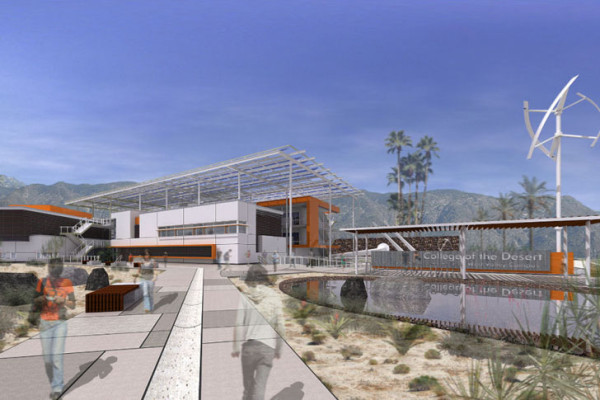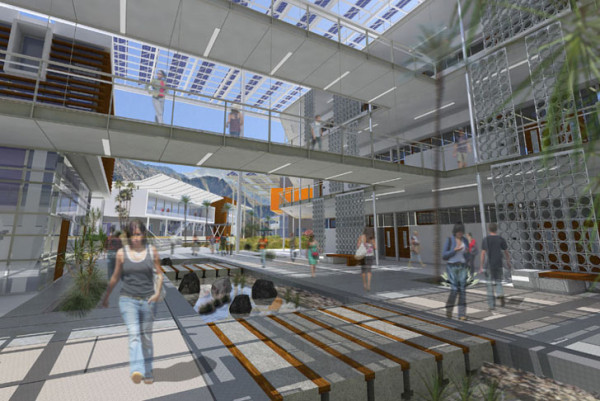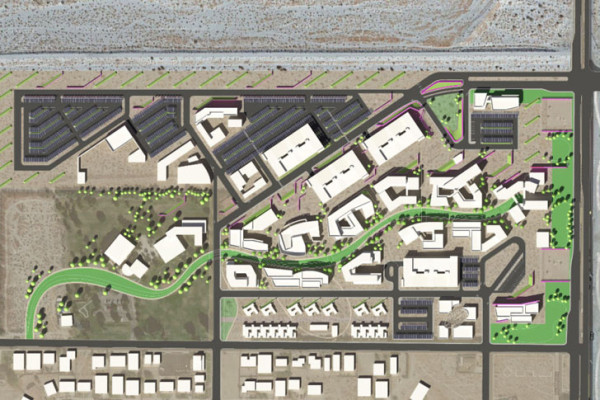Communities that are located in harsh climates – such as one of the driest spots in North America – are often criticized for the enormous resources that are expended to make the climate fit for humans. Palm Springs, Calif., often falls under this infamous category.
A plan for a new college campus in the arid region, however, may quiet some of these critics, at least for a little while. The firm of HGA Architects and Engineers has recently unveiled Phase One of its plans for the new West Valley Campus at the College of the Desert in Palm Springs. According to HGA, despite the harsh climate, the new 119-acre site will become one of the most energy-efficient campuses in the United States and will actually produce more energy than it will consume.

One of the key elements behind the plan is 60-acre “solar farm, ” to be developed with Southern California Edison, that will produce most of the electricity for the Coachella Valley school, which will host about 3,400 students once it opens in 2015. Altogether, the new West Valley Campus will include 50,000 square feet of classroom and laboratory space, plus a curriculum for research on the development of solar panels, wind turbines and other forms of renewable energy technology.

“The plan emphasizes energy production along with substantial conservation and energy efficiency, waste recovery and biomimicry in partnership with green industries and educational initiatives,” said HGA architects in a press release. “The campus will consider the site’s unique ecology and natural resources to create a national model for sustainable research and teaching that supports the local economy and educational needs in the Coachella Valley.”

The central axis of the campus will be a serpentine channel that HGA described as a “manmade arroyo” or dry riverbed. Just like arroyos in the wild, the channel will collect rainwater and direct it to storage tanks for non-potable uses, such as irrigation of the drought resistant landscaping plants. HGA said it’s also experimenting with using some of this collected water for evaporative cooling in some outdoor areas.
On the envelopes of the various buildings, perforated metal panels will let in cooling breezes while also providing shade in the relentlessly sunny valley. These façades will help reduce heat gain and draw in natural daylight to decrease electricity use.
“This project has forward-thinking goals that go beyond net-zero energy to embrace a ‘zero-plus plan’ that creates renewable clean energy rather than simply uses less energy,” said Patrick Thibaudeau, vice president of sustainable design at HGA.
The project is being built with LEED Silver performance targets in mind. Once the state approves the new design, construction is expected to begin in July.